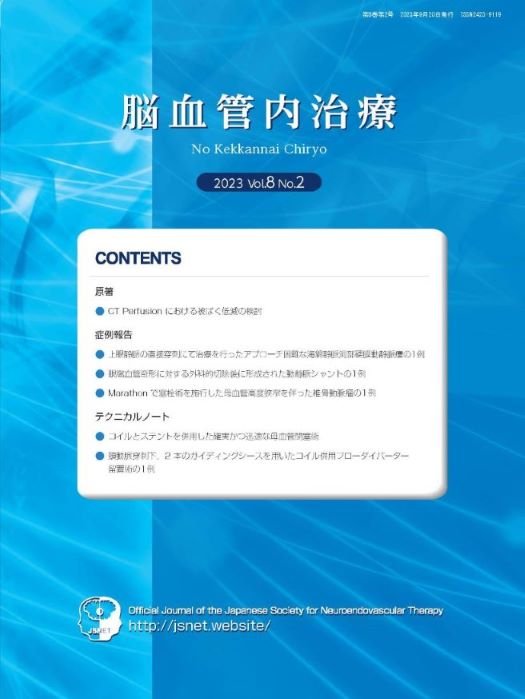Volume 8, Issue 2
Displaying 1-6 of 6 articles from this issue
- |<
- <
- 1
- >
- >|
Original Article
-
2023Volume 8Issue 2 Pages 49-54
Published: 2023
Released on J-STAGE: September 20, 2023
Advance online publication: July 05, 2023Download PDF (3332K)
Case Reports
-
2023Volume 8Issue 2 Pages 55-62
Published: 2023
Released on J-STAGE: September 20, 2023
Advance online publication: May 12, 2023Download PDF (12846K) -
2023Volume 8Issue 2 Pages 63-67
Published: 2023
Released on J-STAGE: September 20, 2023
Advance online publication: June 07, 2023Download PDF (2638K) -
2023Volume 8Issue 2 Pages 68-73
Published: 2023
Released on J-STAGE: September 20, 2023
Advance online publication: July 14, 2023Download PDF (2457K)
Technical Notes
-
2023Volume 8Issue 2 Pages 74-80
Published: 2023
Released on J-STAGE: September 20, 2023
Advance online publication: May 18, 2023Download PDF (5008K) -
2023Volume 8Issue 2 Pages 81-87
Published: 2023
Released on J-STAGE: September 20, 2023
Advance online publication: June 13, 2023Download PDF (7984K)
- |<
- <
- 1
- >
- >|
